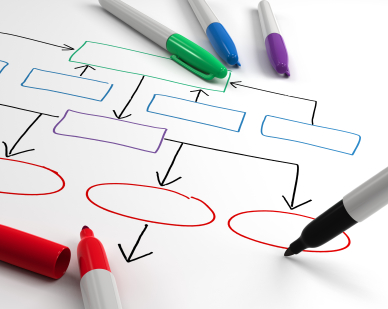B2B Buyer Personas: The 6 Types of B2B Buyers on the Internet (Part 2)
This is part two of a four-part blog series discussing the six “types” or buyer personas of B2B buyers that occupy the digital space. We also offer some practical tips on how to adapt your sales and marketing strategies to make it easier for your buyer.
Part one of this blog series talked about how buyers have changed dramatically with the increased capabilities and use of the internet and web-based technologies. We will now look at the six new buyer types or buyer personas in the B2B space today.
The first type of buyer persona thrives in the freedom inherent to the internet. She is spontaneous, flexible, impulsive and easily distracted. Unlike her pre-internet predecessor who had to methodically preplan B2B purchases using limited resources, today’s B2B buyer can float in and out of the buying cycle as she chooses.
No longer inhibited by a temporally structured and linear buying cycle with a predetermined result, the window shopper can take herself through the buying cycle at her own pace. She may see something she cannot live without and buy almost immediately. Or, she may take her team through nearly the entire sales process and then get distracted by a more pressing business issue.
The flighty and spontaneous nature of the window shopper can be frustrating for B2B salesmen trying to build momentum toward a sale. The important thing to remember when selling to a window shopper is that even though she may not be following the normal timeline of your buying process, there are still certain stages she needs to move through (pain, discovery, evaluation of alternatives, purchase, repurchase).
This is a situation where marketing automation can be of great value. By creating digital content to match each stage of the buying process and then monitoring engagement with that content using marketing automation, you can intuitively understand where each prospect is in the buying cycle, despite the unpredictable timeline. Once you understand more about where each prospect is at, you can try to guide the window shopper’s impulses to the next stage by creating a sense of importance in your marketing content to accelerate the purchase.
The next type of buyer is the uber-connected technology addict. She has a MacBook, a desktop, an iPhone, a Kindle and an iPad. She has apps set up on all of them to give her instant updates on the things she’s interested in. She’s tweeted twice and read three blog posts since I started writing this paragraph.
In the digital space, you’ll find the device queen everywhere. She’ll be on a mobile app one moment and her desktop the next, going wherever her next whim takes her. In order to sell to this person, you need to be everywhere she is. This means you need to be able to engage with her on her phone, computers and tablets.
The first step in doing this is making sure all of your marketing content is compatible with mobile devices. While it may not make sense to invest in building your own mobile app, it is pretty simple to make sure your graphics, videos and text are in formats that can be easily viewed on all mobile devices. The second step in engaging with a device queen is to offer many different options for consuming the same content. Sometimes she will feel like watching a 30-minute webcast on her desktop, but other times she would rather have a quick, mobile summary in 140 characters or less. Offer her both, and then make sure she can find the information on search engines as easily as possible through intelligent SEO optimization.
For the next part of this blog series profiling the second two buyer personas, click here.
If you would like more educational content on how integrating insights about your buyers with marketing automation can affect your sales, click here. To learn more about the sales and marketing outsourcing services we offer (including marketing automation implementation, content development and lead nurturing), you can check out our services page. If you are interested in a free review of your sales cycle, you can request one here.






 One of the key features of any marketing automation software is creating marketing automation rules based on a variety of factors including activities, events, scores, grades, dates, etc.
One of the key features of any marketing automation software is creating marketing automation rules based on a variety of factors including activities, events, scores, grades, dates, etc.